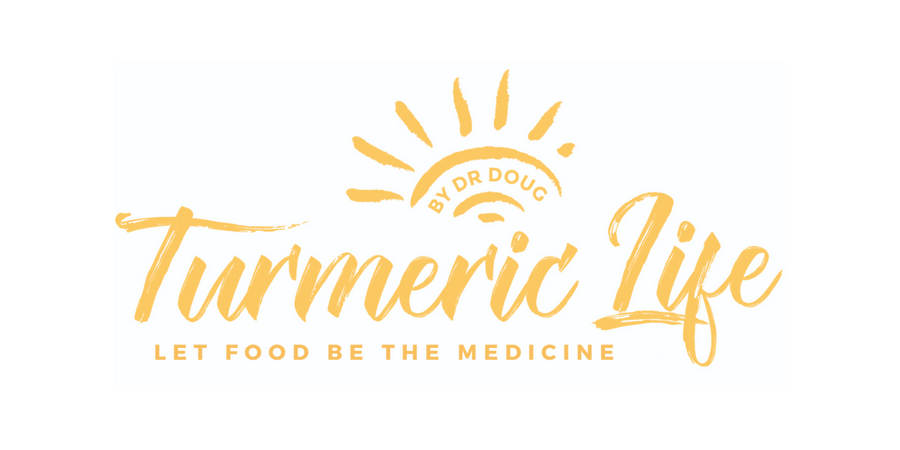Turmeric Research
I am determined to further my research into turmeric for animals and for this reason I have moved to Queensland’s Gold Coast to start my own veterinary practice, as well as to be closer to local universities. More on my research can be accessed below.

Dr Doug with “Maya”, the first horse successfully treated using Turmeric powder.
What is in our Turmeric Bars and Bites?
100% All Natural Ingredients!
My turmeric crop is really taking off!

 The turmeric is growing tall & the watermelon tastes superb.
The turmeric is growing tall & the watermelon tastes superb.
The weeds are under control (via my own hands) and the turmeric has officially become taller than me in parts.
My turmeric crop is growing, growing and growing some more, as is the poddy (orphan) calf, that I’ve nicknamed “Mr T” because he’s been raised on Turmeric Golden Milk.

I’ve been out weeding my field of turmeric
“Mr T” getting fed his morning Turmeric Golden Milk.
I am in the process of planting 150kgs of fresh turmeric.

Next September I expect to dig up 13-14 times that amount of rhizomes ready for replanting.

Can you spot the turmeric in the back of the potato planter?
I am happy with the deep orange colour of the roots and expect some good turmeric powder as a result of all this hard work.
PS. Yes, the tractor got bogged!
At present, I am actively seeking horses in South-East Queensland (Australia) that have been diagnosed with a sarcoid. If you would like to participate in these trials, please email support@turmericlife.com.au
Click on the “Turmeric Sarcoid Trial”below to read more about my Sarcoid Trial.
Turmeric Sarcoid Trial
Design setup: Simons Optimal Phase II cohort control design.
Supervising Pathologist: Dr Rachel Allavena Senior Lecturer in Pathology and Toxicology at The University of Queensland.
John Alawneh, a veterinary epidemiologist with therapeutic trial experience at The University of Queensland.
Vets: Doug English (Tallebudgera), Christine Myers (Switzerland), Tessia Salmon (Clermont), Simon Fahey (Ireland)
Complete hx of all horses.
Photos and measure all lesions.
Optional Full or MBA health check paid by owner.
Each case will be put onto FB for all to evaluate.
Funding via Turmeric User Group “Crowd Funding”
3 Samples: pre treatment; mid say 6/10weeks; resolution or 12months. By punch biopsy using new punch each horse so no DNA contamination. Surgical skin preparation (by specific to be determined method) for sterile samples placed into 1.formol saline and 2. RNAlater sample for gene expression and cytokine measure. These can be frozen within a few days to -20C
Groups:
- Feeding 1 dessert spoon powdered turmeric twice daily with ½ teaspoon cracked pepper, and 50 ml coconut oil
- Feeding 2 dessert spoons Turmericle (Stance Equine) twice daily
- Standard topical preparation DMSO Turmeric extract applied twice daily. Method: standard swab with single dip into container.
- 1. + 3.
- 2. + 3.
Budget:
Histopathology at UQ per Rachel $10 per sample with remainder funded by university $30
Transport as normal in formal saline for Australian cohorts. Overseas: can be fixed in paraffin blocks pre-cutting and these will last indefinitely. Are able to be posted but an import assessment fee of $70 applies to each shipment. Better to give to a traveller to carry in luggage – legal and no declaration needed.
Biopsy punch $4
Visit costs to each horse: time, vehicle costs, sedation local, disposables – will have to be owner contribution, but say, Crowd Funding contribution $200 for 3 visits.
PCR: Full set reagents and kits $1,300: RNAlater (stabilisation of tumour samples) 150 ml $450; QIAgen RNA easy minikit (RNA extraction from tumour tissue) $590; pipette tips $80; primers for selected cytokines $185 which will do around 100 tests. About $20 per horse.
Immuno-histochemistry $20 – $30 per horse. Only if lymphocytes in tumours.
Ball park figure per horse: $300
There are a number of RESEARCH topics that I am interested in:
1. My first experiment is going to be on the control of Equine Sarcoid. Already we have seen some very good cures with just feeding turmeric to horses with sarcoids and I would like to combine it with a solvent to carry the curcuminoids through the skin to see if that can further improve the result. Also I will try to incorporate another drug: EBC46 into the treatment mix. I will soon be actively seeking cases.
2. Absorption of curcuminoids in horses seems to be better than in dogs and humans. I would like to trial absorption with just the unprepared powder with pepper and compare this with Turmeric Golden Paste. I will trial feeding the differing types and running blood tests to check absorption rates.
3. To date there are no turmeric absorption trials in dogs and I would like to look further at this.
4. I strongly suspect ruminants absorb turmeric really well because of the microbial fermentation in the rumen, thanks to the production of short chain fatty acids which dissolve curcuminoids and keep them inside, preventing fast excretion, and I would like to prove this. The hind gut of the horse may be similar.
If you would like more information on my Veterinary work please check out my Facebook Page, Doug English Veterinarian OR get regular updates by Subscribing to Turmeric Life (sign Up BELOW).
Doug English, BVSc
Veterinary Surgeon
